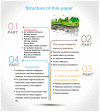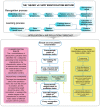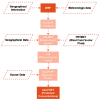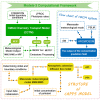Air Pollution Forecasts: An Overview
- PMID: 29673227
- PMCID: PMC5923822
- DOI: 10.3390/ijerph15040780
Air Pollution Forecasts: An Overview
Abstract
Air pollution is defined as a phenomenon harmful to the ecological system and the normal conditions of human existence and development when some substances in the atmosphere exceed a certain concentration. In the face of increasingly serious environmental pollution problems, scholars have conducted a significant quantity of related research, and in those studies, the forecasting of air pollution has been of paramount importance. As a precaution, the air pollution forecast is the basis for taking effective pollution control measures, and accurate forecasting of air pollution has become an important task. Extensive research indicates that the methods of air pollution forecasting can be broadly divided into three classical categories: statistical forecasting methods, artificial intelligence methods, and numerical forecasting methods. More recently, some hybrid models have been proposed, which can improve the forecast accuracy. To provide a clear perspective on air pollution forecasting, this study reviews the theory and application of those forecasting models. In addition, based on a comparison of different forecasting methods, the advantages and disadvantages of some methods of forecasting are also provided. This study aims to provide an overview of air pollution forecasting methods for easy access and reference by researchers, which will be helpful in further studies.
Keywords: air pollution forecast; artificial intelligence methods; forecasting models; hybrid models; numerical forecast methods; statistical methods.
Conflict of interest statement
The authors declare no conflict of interest.
Figures






References
-
- Ferreira J., Guevara M., Baldasano J.M., Tchepel O., Schaap M., Miranda A.I., Borrego C. A comparative analysis of two highly spatially resolved European atmospheric emission inventories. Atmos. Environ. 2013;75:43–57. doi: 10.1016/j.atmosenv.2013.03.052. - DOI
-
- Stern A.C. Air Pollution: The Effects of Air Pollution. Academic Press; New York, NY, USA: 1977.
-
- Song Y., Qin S., Qu J., Liu F. The forecasting research of early warning systems for atmospheric pollutants: A case in Yangtze River Delta region. Atmos. Environ. 2015;118:58–69. doi: 10.1016/j.atmosenv.2015.06.032. - DOI
Publication types
MeSH terms
LinkOut - more resources
Full Text Sources
Other Literature Sources
Medical
Research Materials

